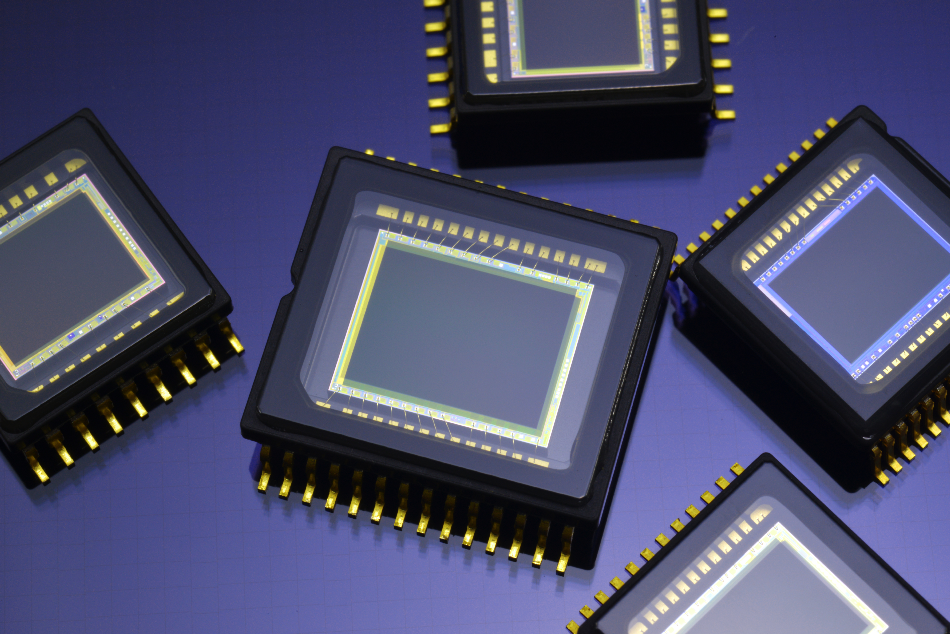
Image Credit: Katsuhiro/Shutterstock.com
Light sensors are inactive devices that use light energy to make an electrical output. Typically referred to as “photosensors”, these devices produce an electrical signal that can be used to indicate the strength of light being detected.
These devices measure the radiant energy of light and are inherently only able to detect light in a narrow part of the electromagnetic spectrum, ranging from infrared up to ultraviolet.
Light sensors can be grouped into two primary groups: Those that produce electricity when lit and those that alter their electrical qualities in some manner when lit. These categories can be broken into the types of photosensor devices listed below.
Photovoltaics
Photovoltaic devices produce an electromagnetic field relative to the radiant energy they acquire. These devices are based on two-layered semiconductor materials that are capable of producing a voltage. Unlike some other photosensor devices, photovoltaic cells work most effectively in natural light.
Photovoltaic cells are based on single-crystal PN junctions and are inactive in the dark. When they are illuminated, electrons to flow through the PN junction to produce an open circuit voltage. Solar cells have positive and negative sides, as with other sources of electrical power.
The most standard use of photovoltaic sensors is in solar cells, which convert light into electrical energy. The energy produces by these cells can also be used for photodetection purposes. Typically, however, solar cells are used as an alternative power supply in everything from calculators to deep space probes.
Photoemissives
Photoemissive devices discharge free electrons from a light-response substance when hit by a photon of adequate energy. The energy of a photon is dictated by the light's frequency, with greater frequencies having more energy than lesser frequencies.
A key advantage of photoemissive sensors over other devices is the simplicity with which high-quality amplification can be integrated inside the detector through the usage of an integral electron multiplier. Another big advantage is how easily they can be used to create a uniform, large detector surfaces. These surfaces are essential for imaging devices.
There are three standard applications for which photoemissive devices are superior to other kinds of photosensors: the detection of low-intensity light, the rapid detection of low-light signals and the generation of high-resolution imaging.
Photodiodes
Photodiodes use light to regulate the flow of electrons and holes across a PN-junction. If a photodiode is in a weakly-lit room, it only permits a small quantity of the current to pass through. If it is well-lit, a photodiode lets a much bigger quantity of current pass through.
When light strikes a photodiode, it generates a reverse-current proportional to the light's intensity within nanoseconds. One major drawback with this kind of photodevice is the fairly small current flow it produces, even when brightly lit. A photodiode is also more responsive to longer wavelengths, like those in the infrared part of the spectrum.
These devices are made for detector applications with a spectral response tuned to specific wavelengths of the incident light. The linear nature of a photodiode makes it extremely useful in basic light sensor applications, such as in cameras, DVD-ROM drives and remote controls.
Phototransistors
Basically, a photodiode with built-in amplification, phototransistors also change their electrical resistance in response to light, with photoconductivity caused by light hitting a semiconductor material. Hence, increasing the amount of light on a phototransistor increases the current for an applied voltage.
Phototransistors function in an identical manner to photodiodes except they can supply current gain and are more sensitive, with currents 50 to 100 times more than that of the conventional photodiode. Interestingly, any transistor can be readily modified into a phototransistor simply by placing a photodiode between a transistor’s collector and base.
Typical uses of phototransistors include fiber optics and some types of TV remote controls. Sometimes, infrared filters are necessary when phototransistors are used to sense visible light.
Sources and Further Reading
Disclaimer: The views expressed here are those of the author expressed in their private capacity and do not necessarily represent the views of AZoM.com Limited T/A AZoNetwork the owner and operator of this website. This disclaimer forms part of the Terms and conditions of use of this website.